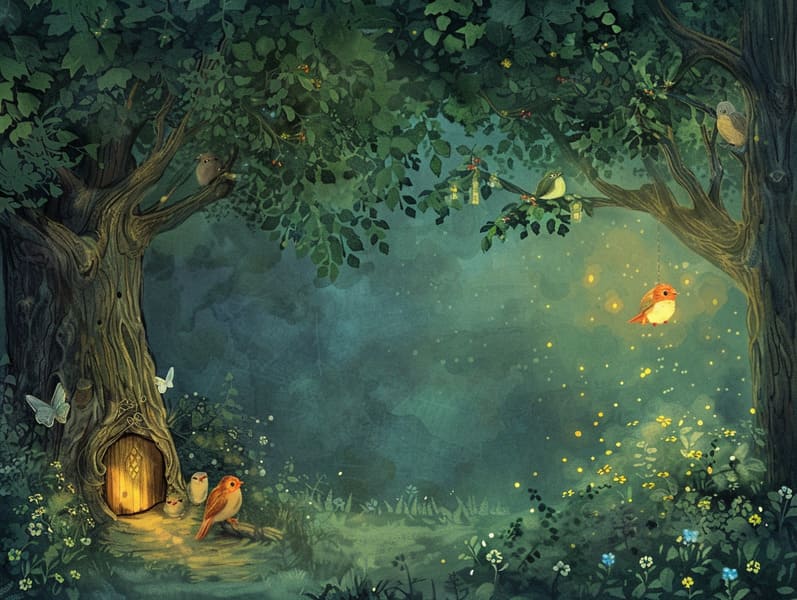A Brief History of Vintage Fairy Tales with the Ageless Wonder.
A Brief History of Vintage Fairy Tales with the Ageless Wonder.
Blog Article

Popular fairy tales have old origins. These narratives have been passed down from one generation to the next centuries before they were ever put on paper. They sprang from a variety of societies, including Western traditions. They were initially narrated among elders, often carrying themes and messages concerning the societal norms and beliefs of the time.
The Grimm brothers, the two Grimm brothers, were among the first to gather many of these beloved stories. Their anthology, "Grimm's Fairy Stories," included stories like "Cinderella," "The Bread Crumb Trail," and "The True Story of Snow White," which have since become cornerstones in the world of children's fairy tales. Similarly, Hans Christian Andersen's imaginative narratives, such as "The Story of the Little Mermaid," and "The Ugly Duckling," have stolen hearts worldwide, establishing their place in the pantheon of classic fairy tales.
Despite being ancient, fairy tales remain as impactful as ever, especially as bedtime stories for kids. These whimsical stories are now available in different formats, including colorful picture books, magical animations, and internet fairy tales.
Their ongoing significance can be traced to several whimsical characteristics:
Ethical Lessons: Traditional fairy tales often convey important moral lessons. Tales like "The Story of the Boy Who Cried Wolf" teach the importance of sincerity, while "The Race of the Tortoise and the Hare" underline the qualities of determination and unassuming nature. These narratives offer young readers clear distinctions between moral and immoral, helping to shape their moral compass in a soft yet impactful way.
Kindness and Comprehension: Traditional fairy tales frequently feature characters facing problems and hurdles, encouraging young listeners to identify with their struggles and applaud their triumphs. For instance, "The Story of Beauty and the Beast" teaches us the significance of looking past the exterior to comprehend the true nature of a individual, fostering sympathy and recognition.
Cultural Appreciation: Many traditional fairy tales are saturated in the cultural contexts from which they grew. Understanding these narratives can provide enlightening views into different backgrounds, developing a sense of world insight and knowledge.
Creativity and Imagination: The enchanted elements in classic fairy tales—mythical entities—promote children’s creative dreams. These tales carry readers to magical realms, provoking inventive thinking and a sense of fascination that persists a lifetime.
Old fairy this site tales are not only enchanting but also didactic. They serve as mesmerizing tools in cultivating various cognitive and affective skills in young ones. When fairy tales are narrated, they enhance verbal development by introducing new terms and elaborate sentence structures. This practice also nurtures listening skills and mental focus, as young readers remain attentive, enthusiastic to see what happens next.
Furthermore, contemplating the themes and characters of old fairy tales can cultivate evaluative skills and intellectual skills. Children are instructed to identify patterns, foresee events, and catch on to cause and effect. These conversations also support the young articulate their thoughts and feelings, fostering their emotional intelligence.
In today’s information age, the availability of digital fairy tales has made these stories more reachable than ever. Online resources and applications share large libraries of timeless fairy tales that can be browsed or heard anytime, anywhere. Fairy tales narrated are particularly well-received, providing an entertaining method for little ones to appreciate these magical stories. Audiobooks and read-aloud videos transport characters and settings to life, often paired with fantastical soundtracks and instrumentals that heighten the story journey.
The timeless fascination of timeless fairy tales lies in their ability to evolve to modern society while keeping their essential themes. Contemporary updates of these narratives often spotlight more multicultural figures and modern settings, making them relatable to today’s audience. However, the core values of gallantry, empathy, and impartiality remain unchanged, continuing to impact audiences of all ages.
Traditional fairy tales also offer a sense of calm and comprehensibility. They highlight a structured narrative with a straightforward beginning, middle, and end, often finishing with the closure of conflicts and the triumph of morality over immorality. This assuredness can be heartening for young ones, giving a sense of solidity in an unstable world.
Ancient fairy tales continue to captivate and instruct new generations, maintaining their majesty and importance in modern society. As kids' bedtime tales, they put forth a perfect blend of fantasy and learning, fostering moral values, empathy, and creativity. The accessibility of online storybooks and the popularity of fairy tales voiced make sure that these traditional narratives remain acquirable to new generations.
By keeping and passing on these tales, we continue to commemorate the rich tapestry of tradition and cultural heritage. Whether you are experiencing a beautifully illustrated book, accessing a online collection, or listening to an audiobook, the mystique of bedtime fairy tales is always within reach. These stories demonstrate of the ageless spell of fairy tales and its ability to bind us across epochs and places.
If you are seeing a richly illustrated book, discovering a internet library, or listening to an spoken story, the enchantment of bedtime fairy tales is always within reach.
These stories reveal of the immortal effect of fairy tales and its ability to link us across generations and cultures, making a tie that enchants and educates alike.